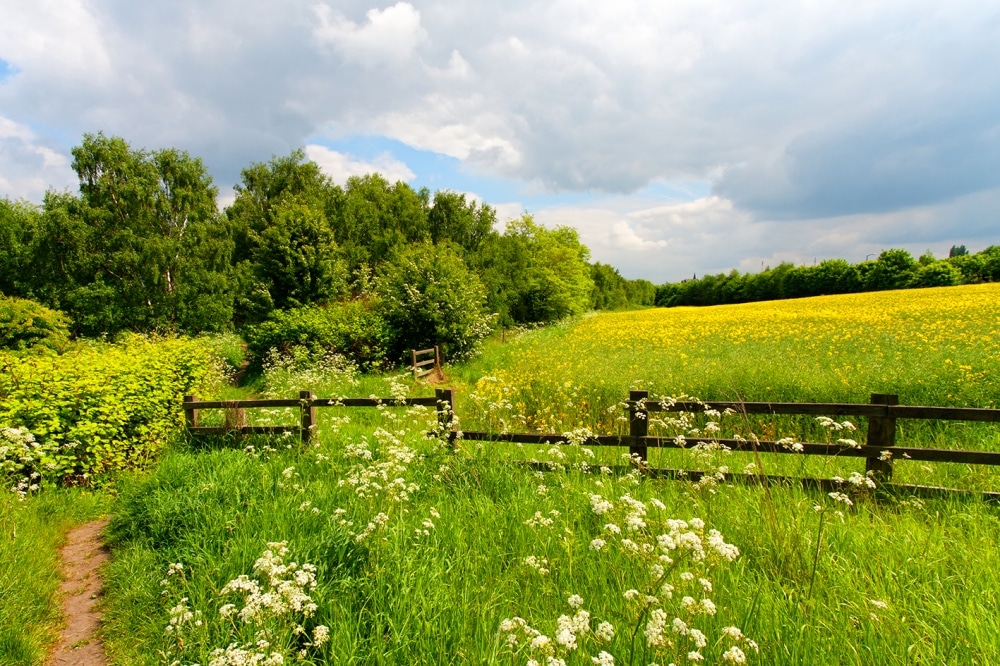My designs are heavily plant based, I love plants and the atmosphere and drama they can create along with their scents and visual impact, so it’s been quite disappointing to see the number of new housing developments that are eschewing the idea of planting up a gorgeous garden to complement their houses and instead opting for small and sterile spaces with barely a patch of lawn, never mind any visible plants.
And with councils under pressure to release green spaces for more new homes I fear it is a trend that will continue as swathes of outside space become bricked up. One such development is on the fringes of Tonbridge, where a proposal for 480 houses to be built on the fields which lead to Lower Haysden is now under consideration. Currently this is an area of greenery, wildlife and trees but how much longer will it be like that?
Part of my job as a designer and horticulturist is to think about the impact of what I design has on the environment and to create beautiful spaces which still entice bees, insects and birds as these all play a massive part in keeping our planet alive.
Globally there are more honey bees than other types of bee and pollinating insects, so they are the world’s most important pollinators of food crops. It is estimated that one third of the food that we consume each day relies on pollination – mainly by bees, but also by other insects, birds and bats. Simply put, bees keep our plants and crops alive.
So with this thought in mind, when I talk to clients I always think how best to maximise their space whilst minimising the use of too much hard landscaping. This not only benefits the design and the clients’ new-found love of their useable and interesting gardens but the small trees, climbers, flowers and evergreen shrubs I use in my planting schemes also help to soften the hard features of paving and structural elements. This results in a far more cohesive and relaxing outdoor entertaining space – while doing the best for the planet and the clients’ health and well-being!
In the design and build world we are in a great position to help make a positive change and influence the end result. After all, a garden is not a garden without the atmosphere of plants and trees, is it?
Particular plants I love to use for urban gardens include agapanthus ‘Queen Mum’, olive trees, thyme, rosemary, lavender, salvia Caradonna, echinacea ‘White Swan’ and ‘Magnus’, as I find them the most reliable. But I also like to weave in some verbena Bonariensis and euphorbia ‘Portuguese Velvet’ too. Once you discover just how powerful plants can be – in myriad ways – you’ll be hooked by them too!
Garden jobs for October:
- Care for your lawn by raking or brushing leaves off the grass. Try collecting them in a leaf bag, which will turn them into useful leaf mould. You can also cut the grass for one last time this year but cut slightly higher to protect the lawn from winter frost.
- Trim hedges so they are crisp and tidy for the winter. This will also ensure they grow back well at the start of spring.
- October’s the time for clearing up. Greenhouses, ponds, gutters and water butts may all need cleaning out, wooden garden furniture will need covering or storing for the winter and terracotta pots will need bringing inside.
- Divide herbaceous perennials. Plant some back in the ground; take others to pot up and give away to friends in the spring.
- In the vegetable patch plant garlic cloves with their pointed ends up and spaced 10cm apart. You can also plant bulbs for a colourful spring display. Try grouping together clumps of five or seven of the same variety through a border to create a really effective display.
- Plant out spring bedding and biennials, such as wallflowers, for spring displays. Pots and hanging baskets can be planted with spring bedding, and teamed with bulbs, grasses, cyclamen and violas for a colourful and textural display.
- ‘Plant’ prepared hyacinths in vases to create winter scent and colour in the house.








